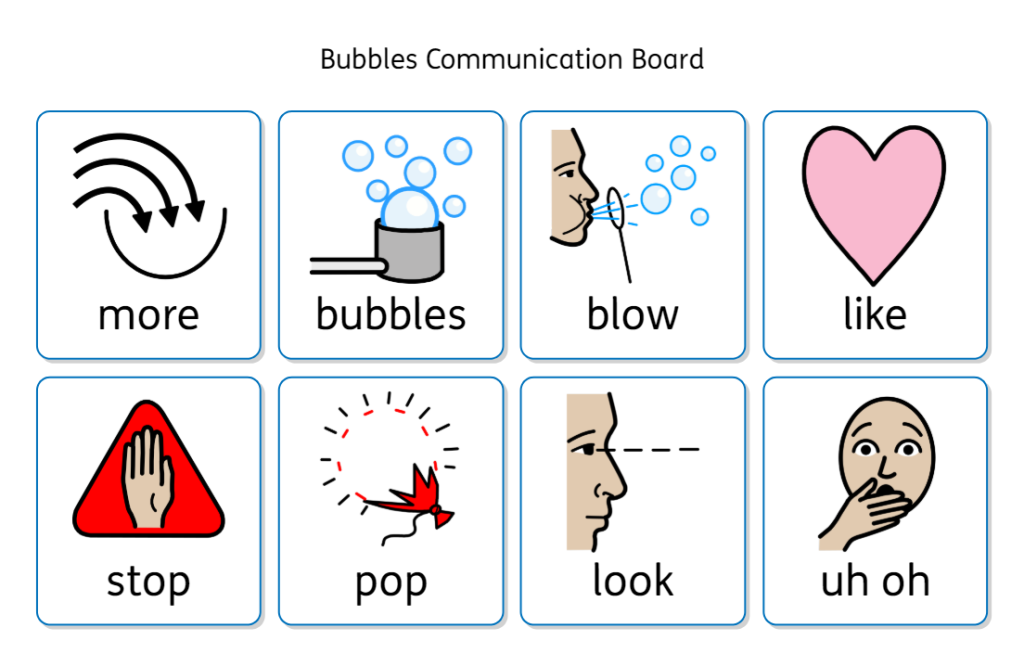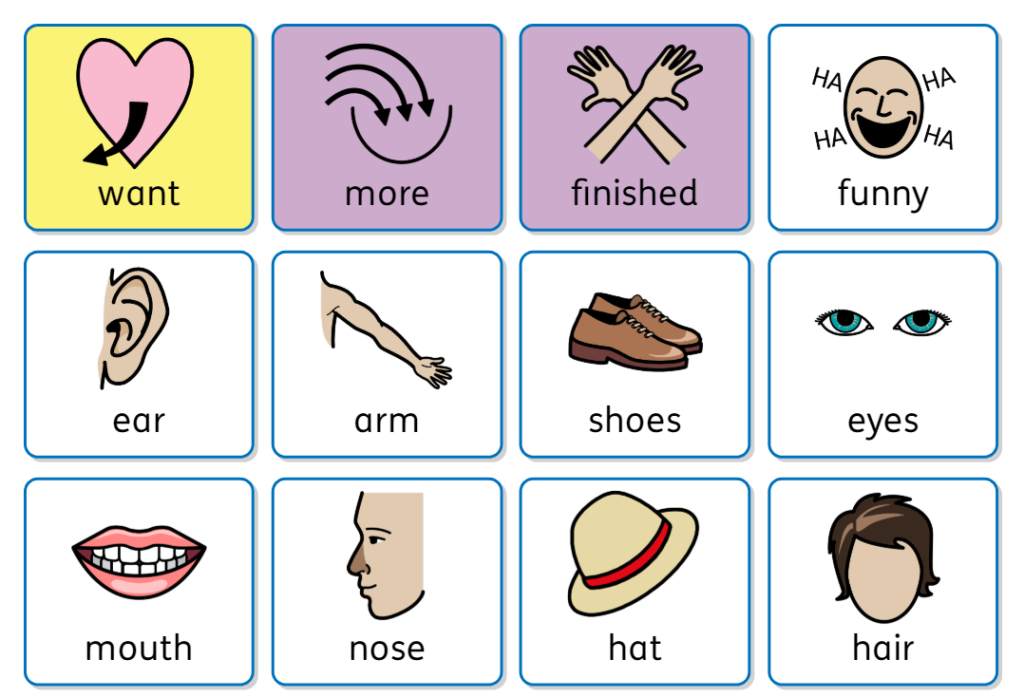How to use communication boards to support speech and language development

A communication board is a sheet of symbols, pictures or photos that a child will learn to point to, to communicate with those around them.
Why use a communication board?
Speech is difficult for some children. They may find it difficult to make people understand what they are trying to say. They might say less than they want to because the words are hard to say. If the child is able to show their listener as well as tell them what they are trying to say, they are more likely to get their message across. It can also be used to model to the child how to make choices and how to develop their language further.
A communication board is just another way of supporting communication. It is used as well as speech not instead of it. If speech is easier (or becomes easier), a child will naturally choose to speak rather than point to pictures.
Boards can vary quite significantly both in complexity and the types of topics they cover. Your child’s Speech and Language Therapist will support you in creating boards that are specific and relevant to your child.
How to use a communication board
The first thing to remember is that this is a new way for your child to communicate, so they will need lots of time and support to learn how to use it.
Children usually learn language from adults and those around them, which the child then learns to copy. It is the same principle with using a communication board. You will need to use the board often to give your child the opportunity to copy this.
How to model the communication board for your child
Start by choosing an activity your child is interested in. For this example, we’ll use puzzles.
Place the board so both you and the child can see and reach it.
As you start to play, comment on what you and your child are doing. As you do this, point to the key words that you are saying, on the board. For example, ‘more puzzle’, ‘it fits!’, ‘do you want a different one?’, ‘it’s the same’, ‘turn it’ or ‘push it down’.
Pause each time you model a word or phrase, allowing your child time to copy by also pointing, if they feel ready to.
If you child points to any of the pictures, it is important to name the picture they pointed to, and then respond appropriately. For example, if your child points to ‘puzzle’, you would say ‘puzzle’ and then maybe hand your child a piece of puzzle, or show them the puzzle.
As your child develops, you may start to point to more than one key word at a time. For example, you might say ‘turn the puzzle’ pointing to ‘turn’ and then ‘puzzle’.
On a more complex board, you may be able to build longer more complex phrases, for example on the ‘Talking about my weekend board’, you could create sentences such as ‘I stayed at home, and watched TV, it was boring’ or ‘I went to a restaurant with my friends, it was fun’.
(NOTE: this level of sentence would likely be achieved only after lots of practise with the board and your child may need prompting questions such as ‘with who?’ and ‘where?’)
Here is a video demonstrating how communication boards can be used during play
Examples of communication boards



